Starting your green journey brings fresh excitement – until stubborn basil wilts or tomatoes refuse to ripen. Many enthusiastic beginners discover that plant partnerships matter more than they realized. Take mint and geraniums: these popular window box companions often battle for resources, leaving both plants struggling.
Sunlight surprises trip up countless starters. That perfect spring planting spot often becomes shaded once trees leaf out, stunting growth for sun-loving vegetables. Even seasoned growers recall their first “why won’t these peppers grow?” moments when learning about microclimates.
Tomatoes tempt many new growers with their juicy promise, but their finicky nature demands patience. These nightshades need precise watering, consistent temperatures, and months of care before yielding fruit. Instead, consider beginning with forgiving options like kale or radishes that offer quicker rewards.
This guide shares proven techniques to bypass common frustrations. You’ll learn how to match plants to your space’s conditions and select varieties that thrive with your schedule. Transform potential setbacks into stepping stones for developing your green thumb confidence.
Understanding Your Garden’s Environment
Every garden has its own personality shaped by climate and soil. Before planting, take time to study these natural partners – they’ll determine which plants thrive in your space. “You can’t fight nature,” seasoned growers say. Work with your environment instead of against it for better results.
Assessing Your Local Climate
Your area’s weather patterns dictate planting schedules. Track first and last frost dates using USDA zone maps – these dates create your growing season framework. Coastal regions might enjoy mild winters, while inland areas face temperature extremes.
Sun exposure shifts through seasons. Observe shadows in spring and summer. That sunny February spot could become shaded by August tree growth. Use free apps like Sun Seeker to track light patterns.
Evaluating Soil Conditions
Four main soil types exist:
- Sandy: Drains fast but needs frequent nutrients
- Clay: Holds water but compacts easily
- Silty: Fertile but erodes quickly
- Loamy: The gold standard for most plants
Test pH levels with a $10 kit from garden centers. Most vegetables prefer slightly acidic soil (6.0-7.0). Amend alkaline soil with peat moss or sulfur if needed.
Planning the Perfect Garden Space
Your garden’s location determines its success more than you might think. Choose a visible spot near your kitchen door or main walkway – places you pass daily. This simple trick helps catch thirsty plants or pest issues early, saving your crops before problems escalate.
Herb lovers should position their garden space within arm’s reach of cooking areas. You’ll snip fresh basil for pasta sauces more often when it grows 10 steps from your stove. For vegetable patches, ensure at least 6 hours of direct sunlight reaches the area daily.
Smart planners map out plant spacing using seed packet guides. That cute zucchini seedling needs 3 feet of room to sprawl come July. Leave breathing space between rows for easy weeding and airflow – your future self will thank you.
Keep these practical tips in mind:
- Place water sources within 15 feet to simplify watering needs
- Create 18-inch pathways between beds for comfortable access
- Start with containers if yard space feels overwhelming
Remember: A smaller, well-tended planting garden near your home beats a sprawling plot you can’t maintain. Build success through convenience, then expand as your confidence grows.
Top Mistakes New Gardeners Make and How to Avoid Them
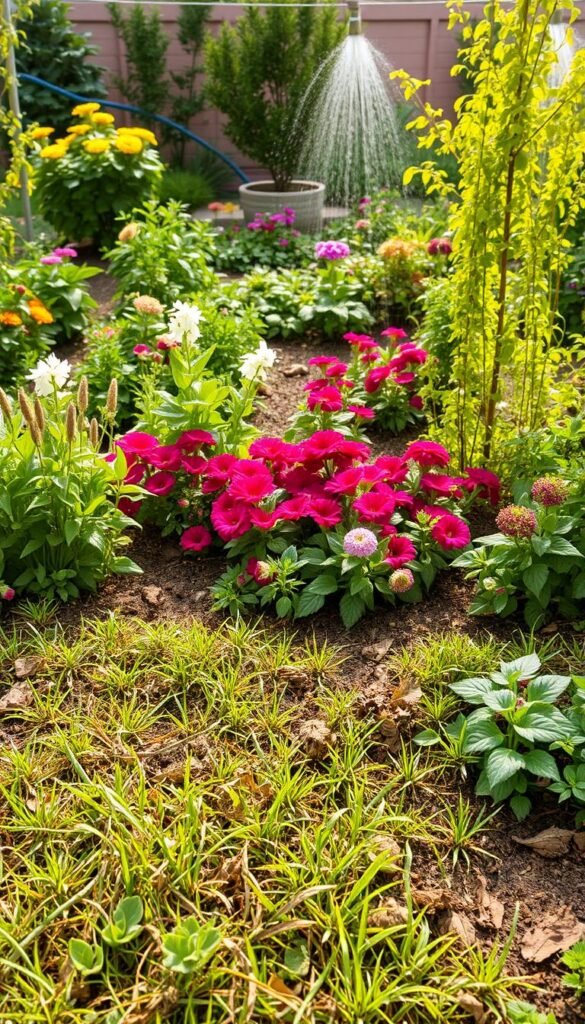
Ever planted a thriving seedling only to watch it struggle weeks later? Many first-timers discover their garden location works against them. “Out of sight often means out of mind,” notes urban gardener Lisa Tran. Hidden plots behind sheds or in distant corners frequently get neglected when watering cans feel heavy on busy days.
Overambitious planting ranks high among beginner mistakes. That packet of 50 carrot seeds seems exciting until thinning becomes overwhelming. Start with three easy-care plants like bush beans or cherry tomatoes instead of transforming your yard into a farm overnight.
Timing trips up even enthusiastic starters. Tender seedlings planted before frost dates often perish, while late-sown crops might never mature. Use your phone’s weather app to track local trends – most areas have 10-day forecasts that help avoid cold snaps.
Watch for these frequent issues:
- Ignoring soil preparation (mix in compost before planting)
- Cramming plants like sardines (follow spacing guides)
- Forgetting harvest schedules (set calendar reminders)
Your garden thrives when you match efforts to reality. Small, consistent care beats grand plans that fizzle out by midsummer. Build skills gradually, and soon you’ll spot problems before they derail your green dreams.
Planting Right: Timing and Techniques
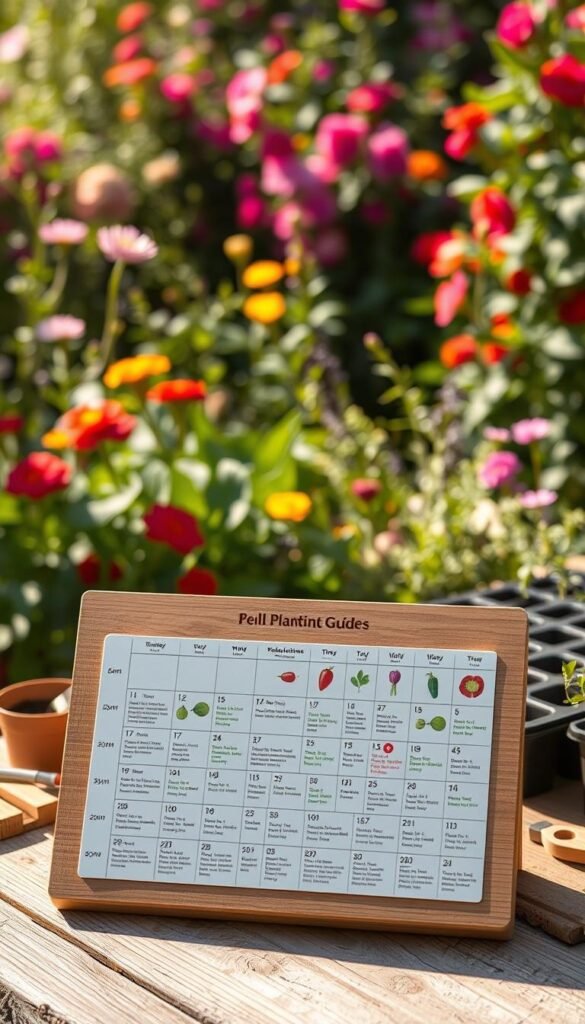
Timing holds the secret ingredient for thriving crops. Your local frost dates act as nature’s calendar – plant too early, and tender sprouts freeze; plant too late, and fruits might not ripen. Check your area’s average last spring frost date using USDA resources or local extension offices.
Early vs. Late Planting Decisions
Cold-hardy champions like spinach and peas laugh at frosty mornings. These resilient plants grow best when soil temperatures hover between 40-75°F. Sow them 4-6 weeks before your last expected frost date for crisp spring salads. Pair them with radishes and kale for a frost-proof feast.
Heat-seekers like tomatoes demand patience. Wait until nighttime temperatures stay above 50°F – usually 2 weeks after your last frost date. “Rushing summer crops is like baking bread in a cold oven,” says Maryland grower Luis Rivera. Warm soil helps roots establish quickly, reducing transplant shock.
Boost success with these strategies:
- Start pepper and eggplant seeds indoors 8 weeks before outdoor planting time
- Use floating row covers to protect early crops from surprise frosts
- Track soil temps with a $5 thermometer from garden stores
Microclimates change the game. South-facing walls radiate heat, letting you plant warm-season plants earlier. Low spots collect cold air – reserve these for frost-tolerant greens. For detailed organic gardening basics, including soil prep tips, explore our starter guide.
Keep a gardening journal noting planting dates and results. This personalized record becomes your secret weapon for perfecting seasonal timing year after year.
Selecting Plants for Your Local Climate
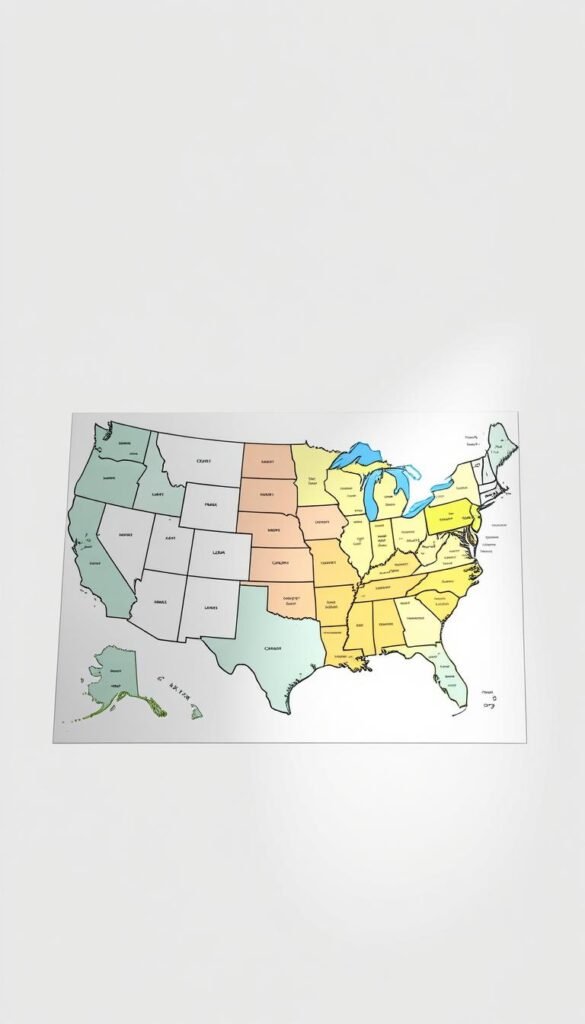
Your plant choices determine whether your garden thrives or merely survives. Matching greenery to your region’s unique conditions creates resilient, low-maintenance beds that flourish year after year.
Know Your Numbers
The USDA Hardiness Zone Map divides North America into 13 climate zones based on average winter lows. Type your zip code into the USDA website to reveal your zone number instantly. Zone 6 gardeners, for example, plan for temperatures dipping to -10°F – critical knowledge when choosing perennials.
This system helps you:
- Pick plants that survive your coldest winters
- Calculate growing days for annual crops
- Identify borderline species needing extra protection
Local nurseries typically stock zone-appropriate options, but online shoppers should double-check listings. “Many tropical beauties tempt us in catalogs,” warns Oregon grower Marcia Peel, “but they’ll die during our first frost unless potted.”
Smart strategies let you push boundaries:
- Use south-facing walls to create warmer microclimates
- Mulch tender roots before winter
- Track weather apps for unexpected cold snaps
Remember – zones reflect 30-year averages. Unusual cold still threatens even hardy plants. Pair this knowledge with smart placement, and your garden will reward you through every season.
Creating a Garden Layout That Works for You
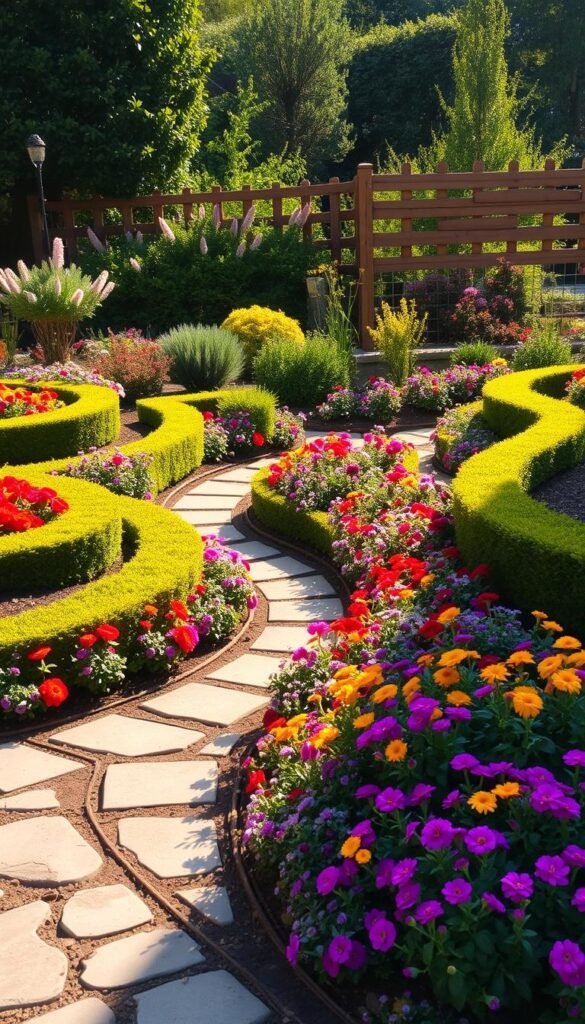
Designing your garden layout feels like solving a living puzzle. Smart arrangements turn limited areas into thriving ecosystems. Start by sketching your space on graph paper – mark permanent features like trees or sheds first.
Maximizing Space and Sunlight
Track sunlight patterns every 2 hours using your phone’s camera. Morning sun differs from afternoon intensity – tomatoes need 8 hours, while lettuce thrives with 4. Use this simple table to match plants to your conditions:
| Plant Type | Sun Needs | Container Friendly |
|---|---|---|
| Tomatoes | Full sun (8+ hours) | Yes (5-gallon buckets) |
| Lettuce | Partial shade (4-6 hours) | Yes (shallow pots) |
| Cucumbers | Full sun | Yes (trellised planters) |
| Parsley | Partial shade | Yes (window boxes) |
Shady yards? Grow basil in movable pots near driveways or patios. Position taller crops like corn on the north side to prevent shading smaller plants. Vertical structures save ground space – try pea trellises along fences.
Leave 18-inch paths between beds for easy access. Rotate container positions weekly to balance light exposure. “Mobile gardens let you chase sunlight like sunflowers,” notes urban farmer Gina Torres.
Getting the Most Out of Your Soil
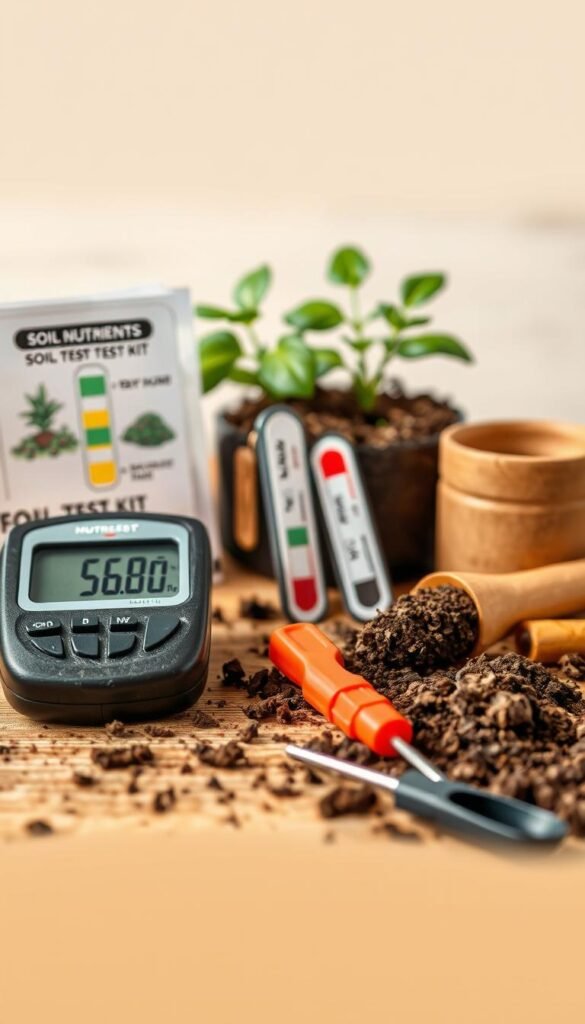
What’s beneath your plants matters more than you think. Healthy soil acts like a five-star restaurant for roots, serving balanced meals of nutrients and water. Start with a simple soil test kit – available at garden centers or through local extension offices – to uncover your dirt’s secrets.
Improving Soil Nutrients
Your test results reveal three key players: nitrogen for leafy growth, phosphorus for strong roots, and potassium for overall plant health. Use this table to spot deficiencies:
| Nutrient | Role | Organic Fix |
|---|---|---|
| Nitrogen | Leaf development | Compost/Manure |
| Phosphorus | Root growth | Bone meal |
| Potassium | Disease resistance | Wood ash |
Mix in 2-3 inches of compost annually to maintain nutrient levels. “Think of organic matter as a slow-release vitamin,” suggests Maryland grower Tina Reyes. Worms and microbes break it down, feeding your plants gradually.
Testing Your Soil pH Levels
Most vegetables thrive in slightly acidic soil (6.2-7.0 pH). Test kits use color charts – red means acidic, blue signals alkaline. Adjust extremes:
- Too acidic? Add ground limestone
- Too alkaline? Mix in sulfur
Retest every 2-3 years. Container gardens let you control pH completely – perfect for fussy blueberries or hydrangeas. Remember: balanced soil grows resilient plants that shrug off pests and droughts.
Watering Wisely and Maintaining Moisture
The secret to vibrant plants lies beneath the surface, where roots seek consistent moisture. Position your garden near a water source or install rain barrels to simplify hydration routines. Before reaching for the hose, check soil dryness by pushing your finger into the ground—if the top inch feels parched, it’s time to water deeply at the base to prevent leaf diseases.
Morning sessions work best, allowing water to soak in before afternoon heat causes evaporation. Target the root zone directly using soaker hoses or drip systems—these methods deliver hydration efficiently while keeping foliage dry. A 2-3 inch layer of mulch locks in moisture, reducing weekly hydration needs by nearly a third.
Smart strategies prevent common beginner pitfalls:
- Group plants with similar thirst levels together
- Adjust schedules during rainy spells or droughts
- Use empty tuna cans to measure irrigation output
Remember: Consistent care beats sporadic soaking. Your garden thrives when roots receive steady sips rather than unpredictable floods.






